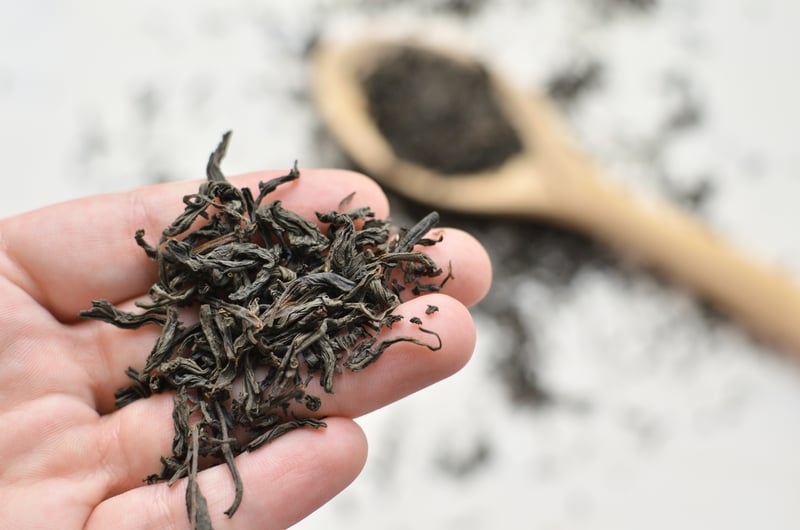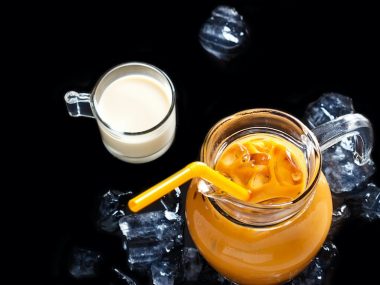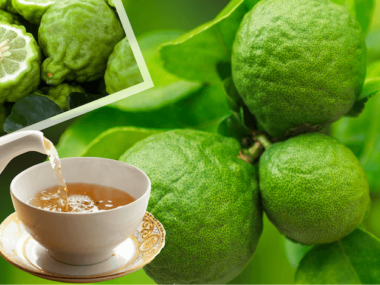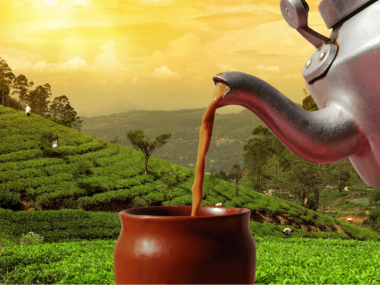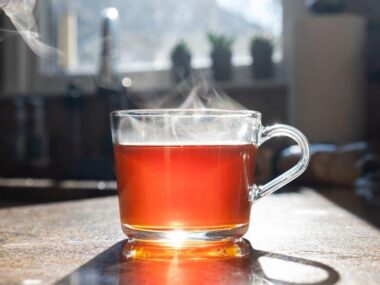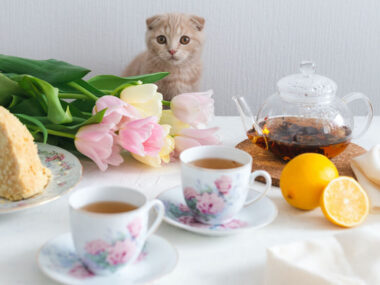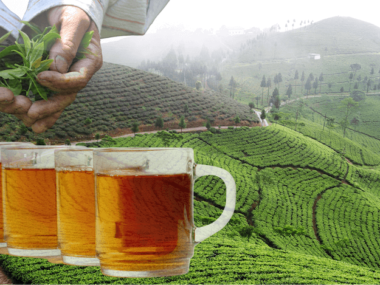Great admiration for Nilgiri tea pickers settles upon tea drinkers who learn of how treacherous a tea harvest can be in this area. The peaks of the mountains reach extreme altitudes while the lush mountainside vegetation hides wildlife one must be watchful of. Nilgiris is where tigers and tea live side by side.
Table of Contents
What Is Nilgiri Tea?
Nilgiri tea is a true tea produced from Camellia sinensis (the tea plant) that grows in southern India. This area is known for growing tea at altitudes that most people would never think of inhabiting. Tea farms dot the extreme mountain slopes where oolong, green, and white tea grow; however, black tea is the predominant tea produced here.
Nilgiri Black Tea
Nilgiri black tea is a highly coveted tea enjoyed around the world. It may be marketed under different names such as Nilgiri Frost, Nilgiri Rose, or Blue Mountain tea, but each is still a black tea.
Then there are various grades of Nilgiri black tea (not including the frost tea) which are graded on the pekoe system. The black tea is graded based on the whole leaf, bits of leaves, fannings, and dust.
Where Does Nilgiri Tea Come From?
Southern India, poised in the Nilgiris District, is where you’ll find the Western Ghat Mountains (also known as the Blue Mountains.) This area is stunningly beautiful because of its exotic abundant flora and fauna.
It’s not unusual to find tea producers growing tea plants here that neighbor trees such as Eucalyptus and Blue Gum. Spice producers also grow cardamom, cloves, pepper, cinnamon, nutmeg, and more in this area. One can only imagine how the senses are met with various fragrances that fill the air and grace the eyes.
The Blue Mountains reach upwards of 8,000 feet (2,438 meters), where the conditions are treacherous. Those trying to maneuver up and along the steep slopes must also keep a watchful eye on dangerous wildlife.
The wildlife in this region consists of animals most of us will never set eyes on, such as tigers, elephants, and the king cobra. The realization of what Nilgiri tea pickers must face daily causes us to pause and have a keen appreciation for the behind-the-scenes work that goes into producing Nilgiri tea.
Why Is Nilgiri Tea Famous?
Nilgiri black tea is what’s considered to be one of the finest black teas in the world. Its terroir (conditions where grown) is perhaps one of the most exotic areas in the world. You can almost taste and visualize the tea growing in such a place that we can only dream about. The nearby spice plants and fragrant trees influence the tea plants.
What Does Nilgiri Tea Taste Like?
A cup of Nilgiri black tea has a vibrant orange amber color. Tea drinkers consensually agree on its floral notes and fruity essence. There’s a very subtle minty essence that may confuse tea drinkers. It may not always be noticeable.
Claims of nearby Blue Gum or Eucalyptus trees and spice crops lend to any mintiness tasted. The palate is met with a fruity briskness ending with a crisp finish and a lingering of soothing, subtle florals. The aroma is not overpowering and has a slight floral smell.
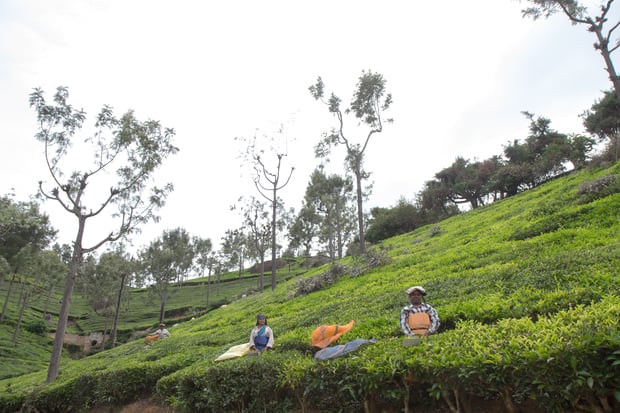
How Is Nilgiri Tea Grown And Processed?
The climate is conducive to the year-round cultivation of Nilgiri tea. Flushes (harvests) of Nilgiri black tea begin in early spring. The harvested tea is taken to a building where it is processed.
Wilting
The tea leaves are spread out on trays where it goes through wilting. Wilting is when the tea leaves interact with oxygen, causing a chemical change known as oxidation.
Rolling And Drying
Tea masters know precisely when they need to transfer the wilted tea to the next phase in processing, which is rolling. Nilgiri black tea is either rolled by hand (known as the orthodox method) or by machine (known as CTC – cut, tear, curl.) The orthodox method is labor-intensive, whereas CTC is efficient and cheaper. Most tea producers opt for CTC. Once done, the rolled tea goes on to drying and then sorting and grading.
Grading
Nilgiri black tea is graded by the pekoe system. This system is complex and can be confusing.
Grading Criteria
- Whole leaf
- Broken leaf
- Tippy (mostly tips)
- Flowery (second/third flush, primarily tips and large leaves)
- Golden Flowery (first/second flush, contains new tender tips/buds)
- Fannings or Dust (coarse or fine tea particles from any of the above that are leftover, used for tea bags)
Pekoe Tea Grades
If any of the below tea grades contain OP, this nomenclature indicates the tea is high quality. Rather than try to interpret and understand all of the tea grades, when shopping for a good quality Nilgiri black tea, look for OP within the grade.
Whole Leaf
- FP = flowery pekoe
Broken Leaf
- FTGF OP = fine tippy golden flowery orange pekoe
- TG OP = tippy golden flowery orange pekoe
- GF OP = golden flowery orange pekoe
- FOP = flowery orange pekoe
- BOP = broken orange pekoe
- BOP 1 = broken orange pekoe one
- GF BOP = golden flowery broken orange pekoe
- BPS = broken pekoe souchong
- GBOP = golden broken orange pekoe
- FBOP = flowery broken orange pekoe
Fannings (used for tea bags)
- GOF = golden orange fannings
- FOF = flowery orange fannings
- BOPF = broken orange pekoe fannings
Dust (used for tea bags)
- OPD = orthodox pekoe dust
- OCD = orthodox churamani dust
- BOPFD = broken orange pekoe fine dust
- FD = fine dust
- DA = dust A
- SD = special dust
- GD = golden dust
- OD = orothodox dust
Does Nilgiri Tea Have Caffeine?
Black tea is the highest caffeinated true tea aside from Matcha (green tea.) Black teas may have up to 40 mg of caffeine in a six-ounce cup.
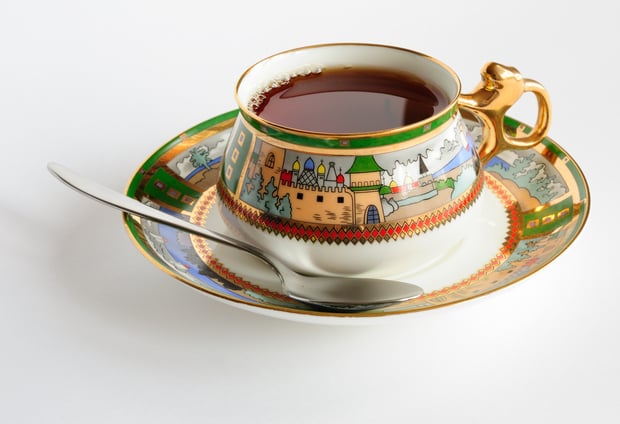
Nilgiri Tea Benefits
Black tea provides tea drinkers with ample caffeine for alertness. Its bioactivity acts as an antioxidant, anti-inflammatory, anti-obesity, anti-diabetic, antibacterial, and more.
Is Nilgiri Tea Good For You?
A published study by the Current Pharmaceutical Design Journal notes how black tea promotes heart health, optimizes metabolism, and reduces chronic inflammation. Those with diabetes, arthritis, inflammatory bowel disease, joint pain, and more may greatly benefit from Nilgiri black tea.
Additionally, black tea is a great way to ward off dental caries (cavities.) The antibacterial bioactivity in the tea prevents the film of bacteria that forms on teeth. This film is what causes tooth decay and dental infections.
An article by the Journal of Evolution of Medical and Dental Sciences states that phenols in black tea help the metabolic system to function in such a way that it controls stored fat. Tea drinkers who consume black tea regularly may find extra pounds begin to melt away.
How To Make Nilgiri Tea
There’s typically one way to enjoy Nilgiri black tea, and that’s iced. Many die-hard iced tea drinkers claim that this tea is the must-have tea to have a superb chilled tea. We have an excellent recipe for you that marries the fruity undertones in Nilgiri black and the summertime sweetness of peaches.
Peach-Nilgiri Over Ice
Ingredients
- 6 cups of filtered water
- 6 teaspoons of loose-leaf Nilgiri black tea
- 2 whole peaches sliced and pitted
- A few fresh sprigs of mint
- Ice
Directions
- Heat the water until it reaches 185 degrees (F) (85 degrees C.)
- Remove from the heat.
- Place the loose-leaf tea into a tea infuser.
- Drop the tea infuser into a teapot.
- Pour the hot water into the teapot.
- Place half of the sliced peaches into the teapot.
- Cover and allow the tea to steep for 5 minutes.
- Remove the cover and allow the tea to cool off to room temperature.
- Pour the cooled tea through a strainer into ice-filled glasses.
- Add a sprig of fresh mint and a fresh slice of peach, and enjoy!
Tip: Avoid adding ice to the hot tea to cool it down. Ice causes the suspension of tannin particles in the tea. By allowing the hot tea to cool off to room temperature, you get a clearer glass of tea.
Nilgiri Black Is A Must-Try
For tea drinkers who appreciate finer teas, Nilgiri black is definitely one of those teas that should be on a tea journey list. Whether hot or iced, it certainly leaves a lasting impression on those who have enjoyed it.
